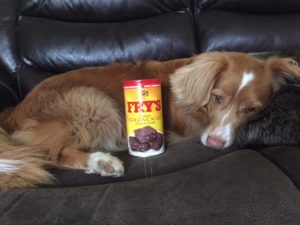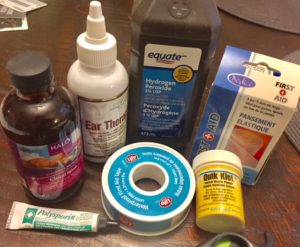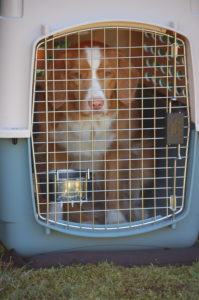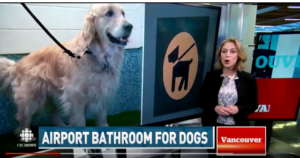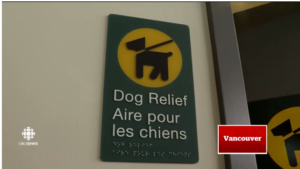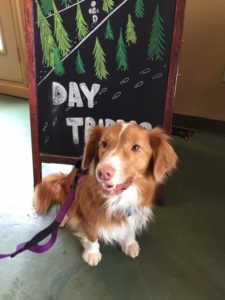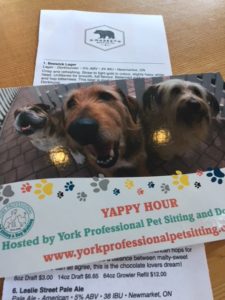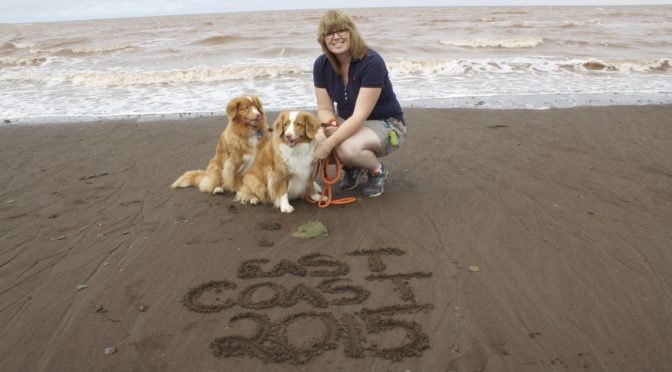Some of the best trips you can take with your dogs are those where they can participate in activities with you every step of the way. Even if it’s not clear whether your dog would be allowed, over the years my motto has become “just ask.”
We visited the Tobermory area in early October and benefited greatly from the post-summer and pre-fall period when there are far fewer people clamoring to get to spots such as the sparkling turquoise water of the grotto at Bruce Peninsula National Park and other attractions in the area. While some of the resort community businesses are starting to close down or shorten their hours in early October, we found it was a great trade off to be there when there fewer people. It was better to access attractions such as the park, but also because it was less hectic for the dogs and people were generally more welcoming of them being there. Spring and fall are recommended as best times to visit to avoid crowds. Long weekends and summer vacation time is the busiest and can make your visit less than enjoyable.
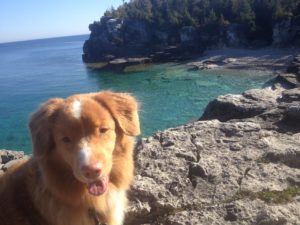
A highlight was being able to take the dogs on one of the glass bottom boat tours that ferry visitors through the waters of the Fathom Five National Marine Park. Instead of buying tickets for the boat tour ahead of time, we approached the ticket booth at Blue Heron Boat Tours the morning we wanted to go and asked if we could bring the dogs. A TripAdvisor review I had read before we left home indicated dogs were allowed on the boat. The tour operator told us that if the cruise wasn’t full that day they would let us on with the dogs. In a short time we were given the go-ahead and enjoyed the tour which goes around to the various sunken shipwrecks that have been there for more than 125 years, and as you will see in this video from the company, to the beautiful Flowerpot Island. The dogs were able to go anywhere on board (on leash).

To get to the island we departed the main cruise ship and boarded a zodiac to reach the shore of the island. From there we got off and stayed for about hours, hiking across the island, exploring the caves and let the dogs roam around the beach.
The grotto at Bruce Peninsula National Park is an incredible place to explore with your canine friends. The grotto is a scenic cave area featuring an incredible pool of blue water, located on the Georgian Bay shoreline. During high season (all summer) the parking lot for this park fills quickly but in 2018 the park introduced a reserve parking system allowing you to book a four-hour time slot, making planning your excursion much more enjoyable. We took the dogs on a hike to the Grotto. On the day we were there in early October there were very few people on the trial.
The grotto is a scenic cave area featuring an incredible pool of blue water, located on the Georgian Bay shoreline. During high season (all summer) the parking lot for this park fills quickly but in 2018 the park introduced a reserve parking system allowing you to book a four-hour time slot, making planning your excursion much more enjoyable. We took the dogs on a hike to the Grotto. On the day we were there in early October there were very few people on the trial.
We stayed at Wireless Bay Cottages which allows dogs in several of its cottages. Our cabin featured a small front porch and access to the shoreline of Georgian Bay where we watched the Chi-Cheemaun ferry come in each day. From here we were able to walk to the village to check out various shops and restaurants.
Natural attractions such as the Bruce Peninsula offer endless opportunities to enjoy a restful and educational vacation while at the same time enjoying the company of your dogs.







